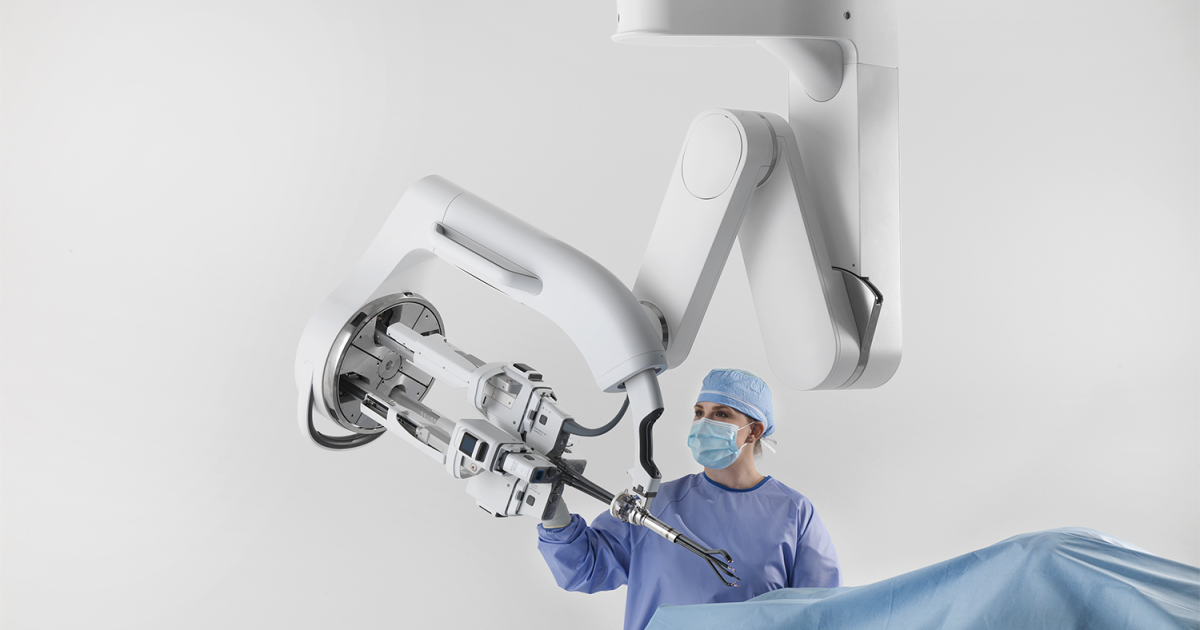Performing the surgery requires years of intensive study and a steady hand, but robots could do it more easily with today’s AI technology.
Researchers at Johns Hopkins University (JHU) and Stanford University have taught a robotic surgical system to perform a number of surgical tasks as proficiently as human doctors, simply by training it on videos of the procedures.
The team used the da Vinci surgical system for this study. It is a robotic system that is usually remotely controlled by a surgeon with arms that manipulate tools for tasks such as dissection, suctioning and cutting, and sealing vessels. Systems like these give surgeons much more control, precision and a closer view of patients on the operating table. The latest version is estimated at more than $2 million and does not include accessories, sterilization equipment or training.

Intuitive
Using a machine learning method known as imitation learning, the team trained the da Vinci surgical system to independently perform three tasks associated with surgical procedures: needle manipulation, lifting body tissue, and suturing. Take a look.
Surgical robot transformer demo
The surgical system not only performed them as well as a human could, but also learned to correct its own mistakes. “Like when he drops a needle, he automatically picks it up and keeps going. That’s not something I learned,” said Axel Krieger, an assistant professor at JHU who co-authored the paper on the team’s findings that was presented. at a conference on robotic learning this week.
The researchers trained the AI model by combining imitation learning with the machine learning architecture that popular chatbots like ChatGPT are built with. While these chatbots are designed to work with text, this model spits out kinematics—a language used to describe movement using mathematical elements like numbers and equations—to control the surgical system’s arms.

Intuitive
The model was trained using hundreds of videos recorded from wrist cameras placed on the arms of the da Vinci robots during surgical procedures.
The team believes their model could train a robot to perform any type of surgery quickly and much more easily than the traditional method of manually coding each step needed to control the surgical robot’s actions.

Johns Hopkins University / Stanford University
According to Krieger, this could help make automated surgery a reality sooner than previously imagined. “What’s new is that we only have to collect imitations of different procedures and we can train a robot to learn it in a few days,” he said. “It allows us to accelerate toward the goal of autonomy while reducing medical errors and achieving more precise surgery.”
This could be one of the biggest breakthroughs in the world of robotic-assisted surgery in recent years. There are several automated devices for use in complex surgeries, such as the Corindus CorPath system for cardiovascular procedures. However, their abilities are usually limited to only certain steps of the operations they assist with.
Krieger further pointed out that coding each step for a robotic system can be excruciatingly slow. “One could spend decades trying to model sewing,” he said. “And that’s just suturing for one type of surgery.
Krieger also previously worked on a different approach to automating surgical tasks. In 2022, his team of researchers developed an intelligent tissue autonomous robot, or STAR, at JHU. Guided by a structural three-dimensional light-based endoscope and a machine learning-based tracking algorithm, the robot intricately stitched together the two ends of a pig’s intestine without human intervention.
JHU scientists are now working to train the robot using the imitation learning method to perform the complete surgery. It will likely be years before we see robots fully take over for surgeons, but innovations like this could make complex treatments safer and more affordable for patients around the world.
Source: Johns Hopkins University

